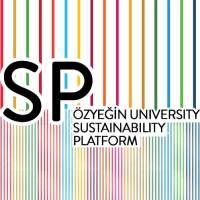Improving Blood Supply Management: Collection Scheduling and Donation Tailoring

Project Manager:
Okan Örsan Özener
Section:
Industrial Engineering
Research Areas:
combinatorial optimization, cooperative and non-cooperative game theory, supply chain management, transportation, distribution, and logistics, systems planning, control, inventory management
Project Start Year:
2013
Project End Year:
2016
Phone:
0(216) 564 93 13
E-Mail:


About the Project:
Blood donations are mostly operated by the Red Crescent in Turkey. The Turkish Red Crescent has received blood donations and it has met approximately 40% of the demand through collection of blood from donors at fixed and mobile collection centers since 1957 whereas the remaining demand is covered by blood centers in hospitals. The blood supply chain differs from a typical supply chain in three aspects: (i) the number of donations and hence the amount of blood supply varies over time and can not be comfortably controlled by capacity increases or overtime decisions; (ii) all blood and blood products have short life spans; (iii) the donated blood needs to be processed within 18 hours of donation and preferably within 6 hours after donation. Consequently, managing blood supply is a highly dynamic question, and it is a great challenge to ensure federal and local administrative departments have adequate supply of blood products. Inefficient blood supply management leads to increased health care costs due to disposal, storage and donation costs. And more importantly, inadequate storage of blood products may ultimately lead to deaths. This project aims to establish appropriate policies in an attempt to render the blood supply chain management more effective and efficient, and to define the operational processes necessary to put these policies into practice properly. In this context, systems have been developed to minimize possible spoilage of blood and blood products by use of correct transportation solutions, taking into consideration the donation distribution in the blood banks and mobile donation locations. Moreover, the efficiency increase that could be achieved by means of apheresis in blood donations has been considered and systems that create donor-specific donation schedules have been designed to maximize the efficiency increase.
Project Finding:
As an outcome of this project, near optimal policies for blood donation collection operations have been identified. Solutions have been developed that will both increase the use of blood and blood products to be provided by donations and minimize costs. Moreover, a method of identifying donation schedules based on advanced optimization techniques has been developed for effective and efficient management of the inventory of blood products.
Goal:
SDG 3, SDG 9
Target:
SKH 3.8, SKH 9.1, SKH 9.4
